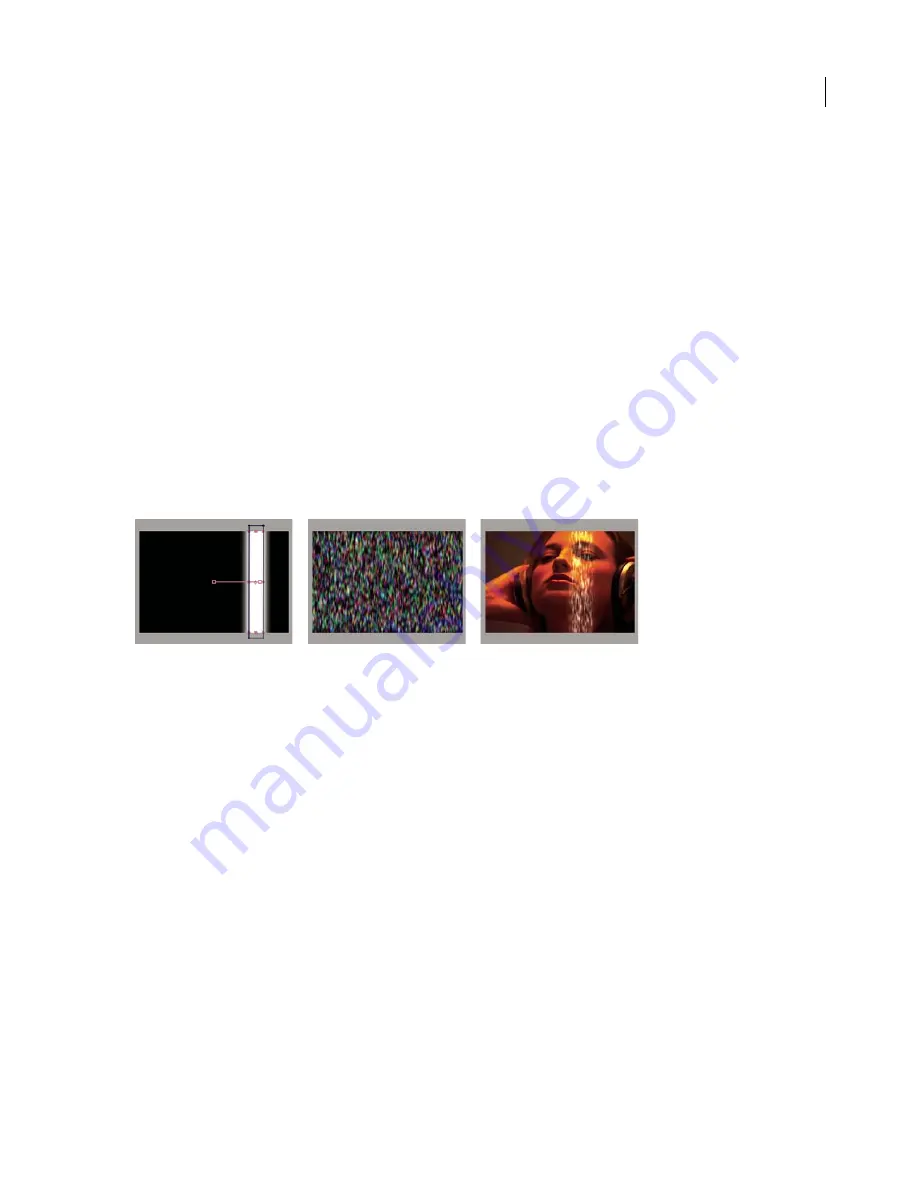
ADOBE AFTER EFFECTS 7.0
User Guide
279
Mattes
About track mattes and traveling mattes
When you want one layer to show through a hole in another layer, set up a track matte. You’ll need two layers—one
to act as a matte, and another to fill the hole in the matte. You can animate either the track matte layer or the fill layer.
When you animate the track matte layer, you create a
traveling matte
. If you want to animate the track matte and fill
layers using identical settings, consider precomposing them.
Define transparency in a track matte using values from either its alpha channel or the luminance of its pixels. Using
luminance is useful when you want to create a track matte using a layer without an alpha channel or a layer imported
from a program that can’t create an alpha channel. In both alpha channel mattes and luminance mattes, pixels with
higher values are more transparent. In most cases, you use a high-contrast matte so that areas are either completely
transparent or completely opaque. Intermediate shades should appear only where you want partial or gradual trans-
parency, such as along a soft edge.
After Effects preserves the order of a layer and its track matte after you duplicate or split the layer. Within the dupli-
cated or split layers, the track matte layer remains on top of the fill layer. For example, if your project contains Layers
A and B, where A is the track matte and B the fill layer, duplicating or splitting both of these layers results in the layer
order ABAB.
Traveling matte
A.
Track matte layer: a solid with a rectangular mask, set to Luma Matte. The mask is animated to travel across the screen.
B.
Fill layer: a
solid with a pattern effect.
C.
Result: The pattern is seen in the track matte’s shape and added to the image layer, which is below the track matte
layer.
See also
“About alpha channels and mattes” on page 242
“To duplicate a layer” on page 157
“Splitting layers” on page 157
To create a track matte
1
Click the Switches/Modes button at the bottom of the Timeline panel. The Modes column appears in place of the
Switches column. You can also show the Modes column and the Switches column simultaneously.
2
Arrange two layers in the Timeline panel. Make sure that the designated matte layer is directly above the desig-
nated fill layer.
3
From the TrkMat menu for the fill layer, define transparency in the next layer above by choosing one of the
following:
No Track Matte
No transparency created; next layer above acts as a normal layer.
Alpha Matte
Opaque when alpha channel pixel value is 100%.
Summary of Contents for AFTER EFFECTS 7.0
Page 1: ...Chapter 1 User Guide...






























